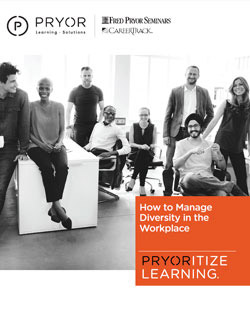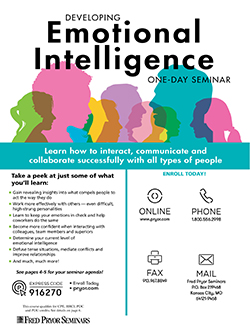Four Practical Ways to Celebrate Global Diversity Awareness Month
In a separate article, we focused on what Global Diversity Awareness month is and why and how organizations can use it to strategically initiate or reevaluate Diversity and Inclusion initiatives. In this article, we focus on concrete and practical activities that any team, organization or individual can implement to jumpstart this work and celebrate the month.
Celebrating Global Diversity Through Food
What is a core need for all people, at the base of our hierarchy of needs? We all must eat! So many events are organized around food, that it can seem a little mundane or even lazy to start with food when thinking about global diversity. However, there is a reason organizations and cultures organize around food-based events.
Because food is such a basic unifying need, with such a historical and cultural foundation, it is a perfect place to start when thinking about global diversity. Here are some ways to integrate food into a global diversity event, or to design such an event around the food itself.
- At a basic level, we can celebrate diversity simply by bringing the organization or team together for a shared meal that celebrates local cuisines and customs. Yes, folks, we’re talking about a basic potluck! The pandemic thwarted many organization’s attempts to have regular social events organized around food. Now that more offices are back together in the same space, getting used to shared meals is an important part of re-entry. Global diversity awareness month provides an opportunity to invite people to bring food in from their own cultures or traditions. For some organizations, this may end up being primarily U.S. focused – picture a table that has options from traditional U.S. southern recipes to New England comfort food, to Tex-Mex snacks, to traditional Indian cuisine.
- To kick it up a notch, organize a more structured teambuilding event around food. This can be a part of a potluck or a virtual event for a more distributed organization. For example, ask people to give a brief overview of a favorite meal and its cultural importance to them. This may be a story from childhood, or an interesting background fact about where someone grew up, and why a certain food has such prominence there. Ask people to share recipes, and then challenge them to make someone else’s favorite dish for a group event, for just the experience of tasting something unfamiliar and new.
- For international organizations, organize this around countries – with each office having an opportunity to display their top favorite dishes to offices in other parts of the world. This can culminate in local potlucks broadcast across multiple offices in a shared video conference environment. Ask each office to record a 3-minute overview of a local event to share with other offices during an” All-Hands” event or asynchronously through newsletters. While this takes organization and coordination, it achieves both local team connection and the development of a shared organizational culture. It is a powerful visual to see multiple offices broadcast on a video screen, with each office celebrating in its own way, while including a few minutes to introduce each team to the others. For domestic organizations, this can happen at a state or office level as well.
Food is often a uniting tool across organizations, and for teams that are new to having the diversity conversations, it is a way to ease into cross-cultural awareness in a very human and demystified way.
Maximizing Diversity Awareness Through Art and Culture
Every country and culture also have their unique and shared form of art and literature. Consider organizing a series of art and culture based events or practices, where people from diverse backgrounds present works of art, dance steps, music or literature to others in the organization. These can become optional structured brown bag sessions that span the full year – held in person in different offices, or virtually across offices. It can also be integrated as a special section in an organization newsletter or blog.
SAVE $10 AND TRAIN ON THIS TOPIC TODAY
While this may feel daunting to organize, it doesn’t have to be. Here are some ideas to get it started:
- If your organization has a leadership development program, assign a leadership cohort to take on the planning of this type of year-long or even multi-month series as a project. Ask the group to design an outreach and communications strategy for the initiative, invite volunteers to sign up for specific brown bags or parts of brown bags or newsletter of blog articles, and coordinate logistics for the event. This has the dual benefit of developing project management and leadership skills in your organization and introducing a new diversity offering that many people can participate in without a long-term commitment.
- Focus another event on visual arts – where people bring their favorite works of art and tell the story behind the art of the artist. If you have a diverse organization, this is likely to lead to a diverse collection of artworks. After the event, consider gathering prints of all the artwork presented, with 50-to-100-word descriptions on why the person valued the art they presented. Post these in open spaces within the office to bring the moment of sharing into the environment for the long term.
- Organize another event around books that emphasize a unique culture, or event in history that helped define a culture. For example, devote a segment of a regular organization newsletter or blog to a 200-word article on a culturally-focused book that an employee found compelling – with a summary of that impact. This highlights the unique interests of your employees, while integrating more diversity awareness into an established communications tool.
From Global to Local: Building Team and Leadership Diversity Awareness
While global diversity awareness is important, it is also important to translate that awareness into concrete action. Diversity and Inclusion is an important set of principles and skills – it is also an important category of training for your team. Here are sample topics:
- Generational Differences
- Diversity in Hiring Practices
- Unconscious Bias
- Workplace Culture
- Cultural Differences
- Discrimination Laws and Preventative Approaches
Pryor Learning offers more than thirty learning modules on these topics, with real-time practical tips for demonstrating Diversity and Inclusion skills on the job. Start with the half-day workshop Diversity, Equity and Inclusion in the Workplace or bring the training Understanding and Developing Cultural Diversity into your own organization. If you are team lead or manager, consider the seminar How to Manage Diversity in the Workplace.
These courses can help you avoid right/wrong thinking and invite multiple perspectives; actively identify ways to connect with people from diverse backgrounds; understand how actions can lead to discrimination claims – and avoid them; and identify ways you can challenge yourself and your team when you see yourself or others they judge people based on their characteristics. Awareness goes a long way toward change.
Diversity and Inclusion topics highlight organizational and institutional needs and action plans; and heighten personal self-awareness and interactions. This wide range of applicability makes it essential for your personal leadership development plan.
Connecting with Others
Turns out, the globe is a big place, and thinking about global diversity awareness can be a little overwhelming at an individual level. So, let’s think about what you, and other employees in your organization, might do to quietly celebrate this month – at the level of the conversation.
Follows are tips for active communication that maximize our use of the benefits of diversity:
- Avoid interrupting people or moving the conversation too fast. Some people and cultures value efficiency in communication – getting to the bottom line fast. Others prefer a slower pace, where building the relationship is as or more important than reaching a conclusion in any given conversation. Part of respecting diversity is recognizing that others may prefer a different pace from you.
- Give your full attention and avoid distractions. In some cultures, having your phone with you during a meeting may be acceptable – after all, we are moving at the pace of business. However, other people and cultures consider this downright rude, and may not fully engage in deep content for fear of being interrupted.
- Listen and watch for the full picture, not just facts and answers. Most conversations are filled with body language, subtle expressions of feelings and unspoken assumptions. Listen beyond the facts to the underlying context. This helps you learn what is truly most important to the other person and builds your respect for their individuality. While easier in person, you can notice nuance in virtual conversations as well.
- Find the other person’s unique knowledge and perspective that shapes their thinking. Past experiences shape how we view current problems. Part of respecting diversity, and maximizing its benefits, is listening for the history that informs a person’s current thinking. What do they know that you do not know, and what might it offer the situation?
Want to continue to deepen these types of listening and communication skills? Pryor’s seminars on Communicating with Tact and Professionalism and Developing Emotional Intelligence are a great start. We also have a full video series with tips on better communication, including conflict management and active listening.
Despite the complexities of diversity in the workplace, we all have the power to shape individual conversations. We show respect for diversity by showing respect for other people, and we most often do that through thoughtful and active listening and dialogue.





